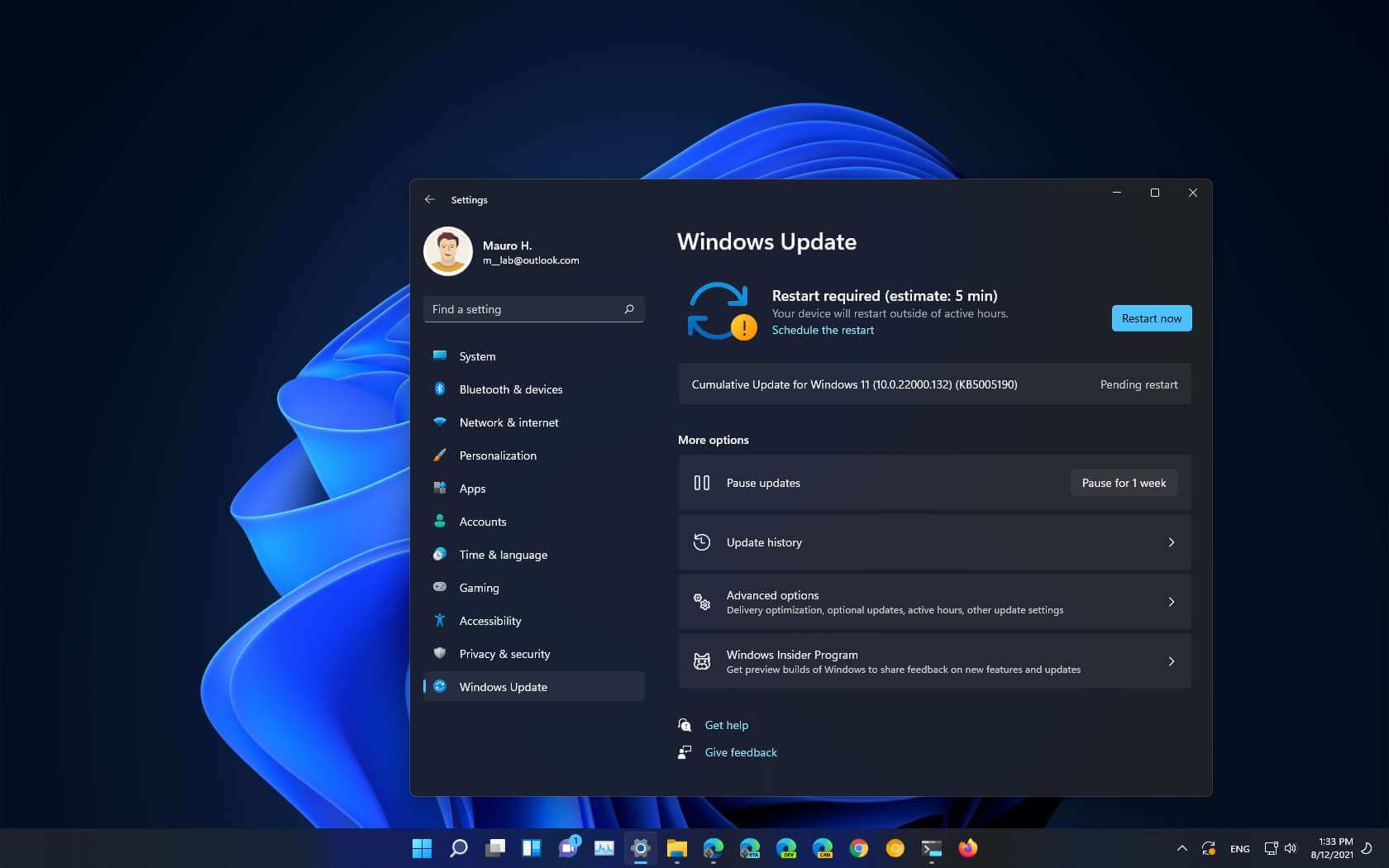- Microsoft releases Windows 11 build 22000.132 as update KB5005190.
- The update is available in the Dev and Beta Channels.
- This flight brings fixes and new Snipping Tool, Calculator, and Mail & Calendar apps.
Microsoft is now releasing build 22000.132 (KB5005190) for devices that are enrolled in the Windows Insider Program’s Dev and Beta Channels as part of the Windows 11 development. This is a little update that includes a number of new apps, fixes, and enhancements. (YouTube also highlights all the new changes with this flight in this video.)
As per the official statement, Windows 11 build 22000.132 includes new versions of the Snap Tool, Calculator, Mail, and Calendar apps for machines in the Dev Channel and delivers the Chat feature from Microsoft Teams to the Beta Channel.
Additionally, this flight provides a summary of known problems and their remedies.
What s new on Windows 11 build 22000.132
These are all the new features and applications that this release offers.
Chat
Microsoft Teams Chat was limited to the Dev Channel even though it had been around for a few versions. The functionality is now stable enough to be available in the Beta Channel, starting with build 22000.132.
You can use the capability to make voice and video calls to individuals or groups. Meetings can be created and joined. The microphone and camera can be turned on or off. You can select your favorite camera, microphone, and speakers. You are able to share your screen. You can talk, check people’s videos in a gallery view, change meeting settings, and see the list of participants. You can also accept meeting participants from the lobby.
Snipping Tool
Along with many other upgraded built-in apps, Windows 11 build 22000.132 also includes a new version of the Snipping Tool. Both the Snipping Tool and the Snip & Sketch programs have been replaced with a new Snipping Tool in this edition. The new software includes a fresh, contemporary UI that incorporates the greatest features from Snip & Sketch, while maintaining the same look as the legacy edition.
To further personalize the experience, the app has a new Settings page.
With the Windows key + Shift + Skeyboard shortcut, you may launch the application and access the snipping menu, which includes Rectangular Snip, Freeform Snip, Windows Snip, and Fullscreen Snip.
Calculator
There will also be an update for the Calculator app. With softened corners and new materials, the updated version, which was developed in C#, has a new appearance that adheres to Microsoft’s new design language.
In this version, the business has concentrated on making the software user-friendly for both the standard calculator and the robust scientific calculator.
Additionally, Programmer Mode provides extensive capability that is necessary for engineering and programming. In order to help identify important graph elements, such as the x- and y-intercepts, plot one or more equations in graphing mode. Additionally, you may now convert between over 100 other currencies and units.
Mail & Calendar
The Mail and Calendar apps are also updated in Windows 11 build 22000.132. Although the redesigned apps incorporate rounded corners and other aesthetic changes, they essentially don’t change from the originals.
Fixes build 22000.132
All of the fixes for this flight are included in this list:
-
Search:
Addressed a scenario where the recent searches list displayed when hovering over the Search icon in the Taskbar was unexpectedly blank. -
Widgets:
Fixed issue where links weren t invoking apps to the foreground. Clicking the Widgets icon in the Taskbar should open it on the correct monitor now. -
Windows Sandbox:
The Taskbar (Explorer.exe) should no longer repeatedly crash inside the Sandbox. -
Gaming:
Mitigated an issue that was making certain games go unresponsive after pressing the Enter key. -
Taskbar:
Fixed issue where the location in use indicator icon wasn t showing up in the Taskbar.
Known issues build 22000.132
All of the known problems with build 22000.132 are as follows:
-
Start:
You may not be able to enter text when using Search from Start or the Taskbar. System and Windows Terminal are missing when right-clicking on the Start button. -
Taskbar:
It will sometimes flicker when switching input methods. -
Search:
After clicking the Search icon on the Taskbar, the Search panel may not open. The Search panel might appear black and not display any content below the search box. On pen-enabled devices, apps may not launch from the Search panel. -
Settings:
Certain searches using the search box in Settings may crash Settings. -
Widgets:
The board may appear empty. Widgets may appear in the wrong size on external monitors. -
Windows Sandbox:
The language input switcher does not launch after clicking the switcher icon on the Taskbar. The IME context menu does not launch after clicking the IME icon in the Taskbar. -
Localization:
There is an issue where some testers may be missing translations from their user experience for a small subset of languages. -
Chat from Microsoft Teams:
Experience is localized for English (US) only. When you make an outgoing call, the user interface shows that the call is getting connected while you do not hear a ring tone. In a video call, sometimes people s videos freeze or display a black image. Also, when switching between calls, the previous call is not automatically put on hold, so audio and video streams continue on both calls.



